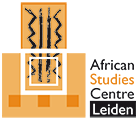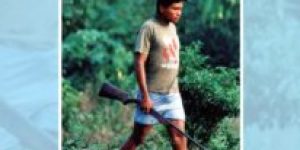ASC ~ Education For Life. Akiiki Babyesiza ~ Introduction
No Comments yet On the occasion of the international conference ‘Education for Life in Africa’, organized by the Netherlands Association for Africa Studies in The Hague on 19 and 20 May 2017, the ASCL Library has compiled a web dossier on this theme. The conference is dedicated to Goal 4 of the UN’s Sustainable Development Goals (SDGs): ‘Ensure inclusive and quality education for all and promote lifelong learning’.
On the occasion of the international conference ‘Education for Life in Africa’, organized by the Netherlands Association for Africa Studies in The Hague on 19 and 20 May 2017, the ASCL Library has compiled a web dossier on this theme. The conference is dedicated to Goal 4 of the UN’s Sustainable Development Goals (SDGs): ‘Ensure inclusive and quality education for all and promote lifelong learning’.
The web dossier contains recent titles from our Library catalogue (from 2013 onwards), divided into six thematic sections. Each title links to the corresponding record in the online catalogue, which provides abstracts and full-text links (when available). The dossier also contains a number of relevant websites. African textbooks present in our Library (for example, on history and on religion), have not been included in this web dossier. They can be searched in our catalogue using the keyword textbooks (form) combined with a keyword such as ‘history’, ‘Islam’ or ‘Christianity’.
The dossier is introduced by Dr Akiiki Babyesiza, an expert in higher education, specializing in Sub-Saharan Africa. Dr Babyesiza has been working for CHE Consult (Berlin), a consulting company in the field of strategic higher education management, since May 2017.
Introduction
Africa is the youngest continent, with half of its population under the age of 15. An inclusive and equitable education sector from pre-primary to higher education that can offer opportunities for this rising young population is at the core of the targets of Sustainable Development Goal 4: Ensure inclusive and quality education for all and promote lifelong learning.
In recent decades, the multilateral initiative Education for All and the education related goals of the Millennium Development Goals have led to substantial changes in the field of education in Africa. Yet, the goal of universal primary education has not been achieved and a high proportion of the world’s out-of-school children are African. While access to primary, secondary and higher education has increased, many other challenges persist with respect to equity and quality. Some of the challenges are connected to how and what children learn at school. One important aspect is the language of instruction, which is usually not the pupils’ mother tongue. Often, the lack of educational success is connected to a lack of proficiency in the language of instruction. Another issue is the role of pedagogy and whether students learn to apply knowledge or just to repeat it. This is, of course, also connected to the quality of the education and training of teachers. Moreover, inequities remain between rural and urban areas with respect to the distribution of schools, particularly secondary schools and higher education institutions. And there are inequities with regard to gender, ethnicity, disability and refugee status.
These challenges are exacerbated in situations of war and violent conflict, where educational institutions can worsen as well as mitigate conflict. Students can be marginalized by language, teaching content and the politicization of teaching staff. At the same time, educational institutions that offer peace and civic education for students and accelerated learning programmes for former child soldiers can have a positive impact in post-conflict situations.
Whether in times of war or in times of peace, there is need for a more holistic view of education – from pre-primary education to higher education and technical vocational education and training. The higher education sector, for example, has long suffered from neglect due to the strong focus on primary education in international development debates. Due to the social rates of return theory adopted by the World Bank, higher education institutions in Africa were perceived as an unnecessary luxury. These days, politicians and development actors have embraced the interconnectedness of the different educational sectors. Teachers are taught at higher education institutions, so there cannot be successful primary and secondary schools without quality tertiary education. While the number of higher education students in Sub-Saharan Africa doubled between 2000 and 2010, the rate of youth enrolled in higher education is only around 6% (26% is the global average). Furthermore, many scholars, practitioners and politicians believe that the development of a knowledge economy/society, with higher education institutions at its centre, is key to local and global sustainable development.
Access to education and enrolment: http://www.ascleiden.nl/content/education-life ~ scroll down a little for the web dossier.
You May Also Like
Comments
Leave a Reply





